Best music streaming service
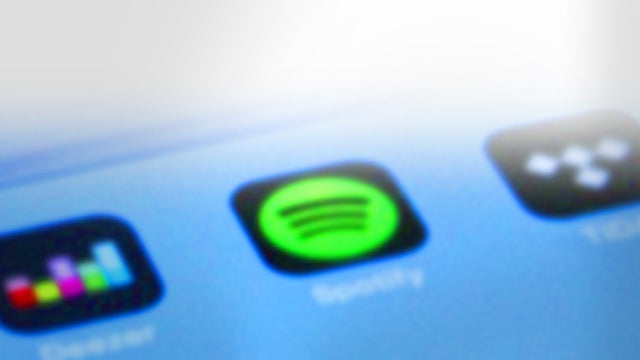
Which is the best music streaming service to use? There’s more than just Spotify out there, so we’re going to pit the streaming giant against its biggest rivals: Apple Music, Tidal, Google Play Music, Deezer, Amazon Music Unlimited and Qobuz. Your ultimate guide to the best Spotify alternatives is right here.
Why should you even care? Well, for starters there’s £10/$10 a month riding on this question – and maybe more if you’re looking for the best in sound quality.
Put simply, they all have gigantic libraries featuring tens of millions of tracks, offer discovery features to help you find new music, and work with the vast majority of phones. So we’ll have to dig pretty deep to find out which streaming services comes out on top.
We’re going to split up this comparison into topics, from price and sound quality to whether you can use them online and what the apps are like to use.
Best music streaming service – pricing
Apple Music: £9.99/$9.99 a month, £14.99/$14.99 family, £4.99 student
Spotify: £9.99/$9.99 a month, £14.99/$14.99 family, £4.99/$4.99 student, free ad-funded service
Google Play Music All Access: £9.99/$9.99 a month, £14.99/$14.99 family, free upload service
Deezer: £9.99/$9.99 a month, £19.99/$14.99 HiFi (16-bit/44.1kHz), £14.99/$14.99 family, £4.99 student, free ad-funded service
Tidal: £19.99/$19.99 a month HiFi (16-bit/44.1kHz & MQA), £9.99/$9.99 regular, no free service, £14.99/£29.99 family, £4.99/£9.99 student
Amazon Music Unlimited: £9.99/$9.99 a month (reduced to £7.99 a month/£79 a year for Prime subscribers), £14.99/$14.99 family (or £149/$149 a year), £3.99/$3.99 a month for Echo only, limited Prime Music service free with Prime membership
Qobuz:£9.99 a month regular, £19.99 premium (16-bit/44.1kHz), £219.99 a year Sublime, £349.99 a year Sublime+ (24-bit/192kHz)
All the main music streaming apps charge the same amount for their standard premium services. It’s £9.99 or $9.99 a month, and that lets one person listen at a time. Amazon offers a discount for Prime subscribers, and you can save even more by paying for the full year up front.
Four of the services here offer a great student discount, Apple Music, Deezer, Tidal and Spotify. All charge students £4.99 for their standard service, with Tidal also offering its HiFi tier at £9.99.
You can’t just be a 40 year-old hedge fund manager who has music lessons on the weekend, though. Student validation happens through Unidays and NUS Extra (Spotify only) in the UK, meaning you’ll need to be studying at a proper university or college.
Amazon Echo owners can make use of the discounted £3.99/month subscription for listening purely on their Echo speaker, though, but remember that means no listening on your phone.
Spotify and Deezer even offer a free subscription, too, if you’re really strapped for cash. On a tablet or computer you can listen to the tracks you choose but have to listen to ads every now and then. With a phone, Spotify will only let you listen to music from a limited number of playlists, and you’ll also have to put up with the occasional ad.’
At the other end of the spectrum, there are also premium plans for most of these services. Apple, Spotify, Google, Tidal, Amazon and Deezer all offer a ‘family’ plan that lets up to six people connect to the same account at once.
Unlike the student deal, there’s no checking that you’re only teaming-up with your brother, mum and auntie, so you can more-or-less share with whoever you like. All the family deals cost £14.99/$14.99 a month.
Tidal, Deezer and Qobuz have rather more interesting higher-price subs too, ones that boost the quality of the music you stream.
Deezer HiFi, Qobuz Hi-Fi and Tidal HiFi all deliver CD quality lossless FLAC (16-bit/44.1kHz) for £19.99 a month, but Tidal also features a selection of “master” quality Hi Res albums using MQA in at that price as well (though you need to access them through the desktop app currently).
Qobuz is a little different, in that it has a couple of ultra-premium tiers, which are only payable annually. Sublime adds in discounted Hi Res downloads (“Hi Res downloads at MP3 prices”) alongside CD-quality streaming, while Sublime+ bumps up streaming quality to 24-bit/192kHz.
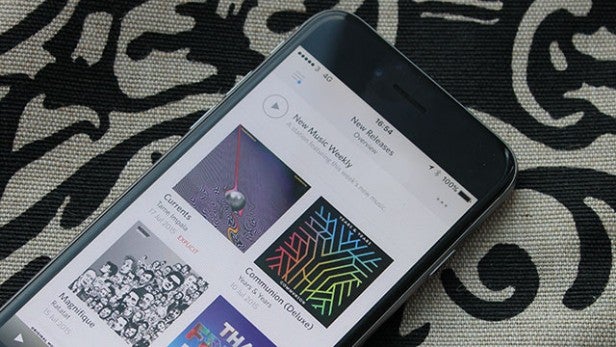
Rdio was one of many services to fail against heavy competition
Best music streaming service – sound quality
Apple Music: 256kbps AAC
Spotify: up to 320kbps OGG
Google Play Music All Access: Up to 320kbps MP3
Deezer: 320kbps MP3, 1411kbps FLAC, MQA
Tidal: 1411kbps FLAC, 320kbps AAC, 24-bit MQA
Amazon Music Unlimited: Undisclosed, presumed 320kbps
Qobuz: 320kbps MP3, 1411kbps FLAC, 24-bit FLAC
The little secret that Neil Young and vinyl-stroking bores don’t want to admit is that all the main streaming services offer excellent streaming quality. Using the highest grade streams these companies offer, even great ears will struggle to judge between a stream and a CD.
Apple Music uses the lowest bit-rate, with 256kbps AAC files, which is comparable to a 320kbps MP3 thanks to the greater efficiency of AAC. Years before Hi Res became such a buzzword, the consensus was that 320kbps digital audio files were largely indistinguishable from CD quality. A good system will tell them apart, your phone and on-the-go earbuds may not.
Across the various services you’ll see a smattering of different codecs used. Play Music, Deezer, Qobuz and likely Amazon use the rather out of date (but highly compatible) MP3, Tidal and Apple Music use AAC and Spotify uses Ogg Vorbis.
While we’d always recommend listening in as high quality as you can, most services also offer stripped-back quality settings for when you’re using mobile data and a) want to conserve data use or b) find yourself in an area with crap signal. You’ll take an knock on sound quality, but most will do the job for casual on-the-go listening. In fact, Spotify’s 96kbps ‘Normal’ streams are among the most enjoyable of the reduced quality streams, despite having the lowest bitrate on paper.
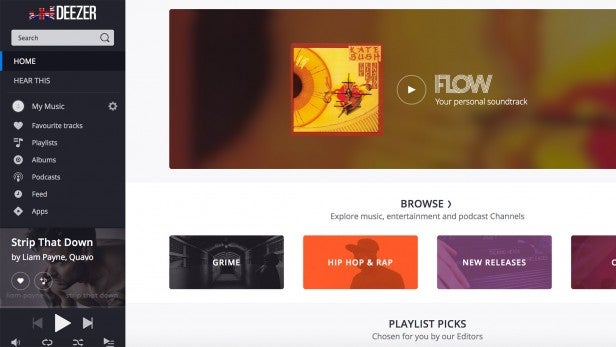
At the other end of the scale, both Deezer and Tidal provide lossless streaming, offering CD quality 1411kbps FLAC. You get this with their £19.99/$19.99 HiFi tiers. With compatible hardware, you can also listen to a limited number of each service’s tracks in hi-res MQA.
There are (at the time of writing) a couple of thousand of these rather than a million but there’s a lot to like in the smaller selection, and more being added all the time. It’s a little hard to surface sometimes though.
As mentioned before, Qobuz goes one better than Tidal with just under 70,000 albums available to stream at up to 24-bit/192kHz on the Sublime+ tier. There’s a more than generous lean to more classical and jazz genres in the selection, but plenty of more recent music is available too.
The only thing we’re not sure about is just how Qobuz does it. MQA is much clearer on how it packages Hi Res music for streaming, Qobuz hasn’t been quite so transparent. Still, it works, and sound quality is good, but arguably Tidal Masters has the edge.
Best music streaming service – discovery features
Apple Music: Strong curation, Apple Connect social network, Beats 1 Radio and genre-based stations
Spotify: Moderate curation, Facebook integration, optional apps, recommendations based on listening habits/occasions, genre and artist-led radio stations, Discover Weekly playlists
Google Play Music All Access: No curation, recommendations based on listening habits, ad-supported radio station (US only)
Deezer: Strong curation, Facebook integration, optional apps, recommendations based on listening habits, Flow mixes
Tidal: Curated content from music journalists, artist interviews
Amazon Music Unlimited: genre playlists, artist radio
Qobuz: featured playlists
Some of these services are much newer than Spotify but all are mature enough to now offer fairly good music discovery features. We could spend ages noodling on about what each service does, but let’s just take a look at the highlights of each.
Spotify’s best-known discovery tool is the Discover Weekly playlist. Each week it gives you 30 tracks Spotify thinks you might like. You also get daily mixes, which are built of tracks you’ve already listened to, and Release Radar, which rounds up new tracks from artists it knows you like.
Discover Weekly has proved an inspiration for several of the other services too. For example, Deezer’s stand-out is Flow. This is an auto-populated playlist that features a mix of new tunes and ones you already like.
Amazon’s effort is arguably a little less sophisticated, and offers a range of genre-based playlists and radio station based on music you’ve listened to before.
There are also suggested albums, but they’re a little disappointing. While Spotify’s Discover Weekly often uncovers artists you’ll enjoy who you’ve never heard before, Amazon’s recommendations don’t stretch much further than offering a hip-hop fan a suggestion to listen to 2Pac’s Greatest Hits.
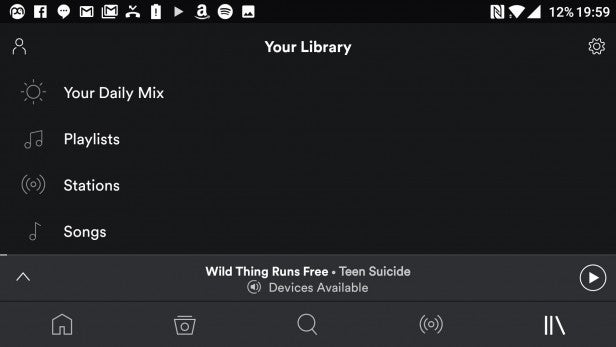
Apple Music has similar playlists too. “My New Music Mix” and “My Favourites Mix” lists are updated once a week and, just as they sound, offer playlists of new and familiar music that you don’t have to curate yourself.
Apple’s stand-out features are perhaps a little less successful, although you might disagree. Apple Connect is a Twitter-a-like feature that lets artists post to fans about their new music, their thoughts on right-wing politics and so on. It hasn’t exactly revolutionised the game, though, and lost prominence in the last redesign of Apple Music.
Then there’s Beats 1. This is a digital radio station, the Apple equivalent of BBC Radio 1. It’s not for everyone but should suit those in-tune with current trends.
Google Play Music has a more stripped-back approach to the whole discovery side. You just get a rolling home screen of suggested playlists based on your tastes. It’s arranged a bit like a digital magazine, heavy on pictures and not too heavy on content. That’s not necessarily a bad thing, as some people find the packed Spotify app a bit much to deal with.
Qobuz and Tidal are similarly laid back. It feels much less like it’s trying to second-guess your listening habits and instead just serves up a selection of featured playlists and new albums in the hope that you might be interested. On Tidal, there’s also a Tidal Rising section that promotes the new acts the Tidal bigwigs like.
Deezer offers strong music discovery across all of its web, mobile and console apps
Best music streaming service – mobile apps and support
Apple Music: iOS, Android, iTunes , Apple Watch
Spotify: iOS, Android, Windows Phone, BlackBerry, PS4/PS3 app, desktop/web player, Apple Watch, Android Wear, Amazon Alexa, Google Home
Google Play Music All Access: Android, iOS, web player, Google Home support, Android Wear
Deezer: Android, iOS, Windows Phone, Blackberry, Xbox One, web player, Apple Watch, Android Wear, Amazon Alexa, Google Home
Tidal: iOS, Android, desktop/web player
Amazon Music Unlimited: iOS, Android, Amazon Alexa, Fire tablets, web player
Qobuz: iOS, Android, desktop/web player
Unless you still have a Windows Phone or BlackBerry, you don’t have to worry much about compatibility with your phone. All these services work across Android and iOS, even those from Google and Apple.
Deezer and Spotify also work on the two outsider operating systems, though with them being on their last legs, the apps are not updated anywhere near as much as their more popular counterparts.
All the services also have web players via browser apart from Apple Music, although you can listen through iTunes. The potential worry here is if you use a secured work PC that doesn’t let you install extra software like iTunes — it’s one of the main reasons you might want to avoid Apple Music.
Spotify has the widest support, found in places where the other services aren’t. For example, it’s built into some home cinema receivers through Spotify Connect, and is generally considered the ‘default’ streaming service to support by wireless speaker makers.
Qobuz is catching up in this regard though, and supports the likes of Yamaha’s MusicCast, as well as DTS Play-Fi and Googlecast.
As smart home and wearable tech develops, so this area is expanding into streaming too. For example. Google Play Music lets you download tracks for offline playback on an Android Wear watch, and is natively supported by the Google Home smart speaker.
Apple Music does similar with Apple Watch, while Spotify and Deezer also boast smartwatch apps too.
If you’re concerned about compatibility with future hardware, Spotify is the platform with the most reach and the fewest ‘political’ issues. For example, while Apple Music will be the first music platform supported by Apple’s HomePod, it’s safe to assume Spotify will be the second. That’s certainly the case with Amazon’s Echo speakers.
Tidal? Not so much. As ever, Tidal is the service for those who are into streaming for the music side, rather than the tech peripheral side. It sticks to the standard web and mobile apps, though you will find it built into some key hi-fi kit, like Linn McIntosh and Naim.
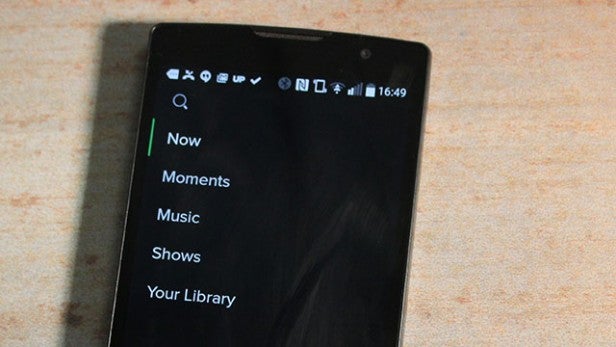
Spotify still reigns when it comes to app support across multiple platforms
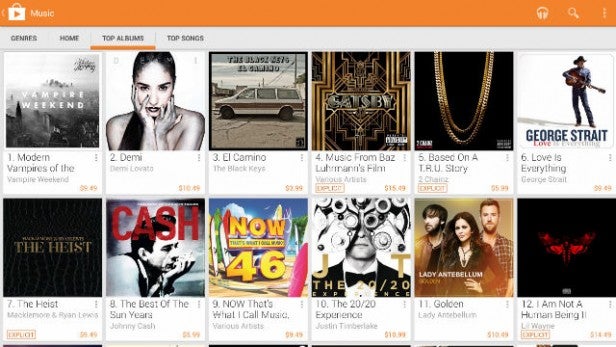 Google Play Music All Access lets you upload 50,000 of your own songs to the cloud for free
Google Play Music All Access lets you upload 50,000 of your own songs to the cloud for free
Best music streaming service – offline features
Apple Music: Unlimited mobile downloads
Spotify: 3333 mobile downloads per device, three devices, desktop playlist downloads
Google Play Music All Access: Unlimited mobile downloads
Deezer: Unlimited mobile and desktop downloads
Tidal: Unlimited mobile downloads
Amazon Music Unlimited: Unlimited mobile downloads (with 10 authorised devices)
Qobuz: Unlimited mobile and desktop downloads
All eight services allow you to download tracks to their mobile apps for offline listening, so that’s a good start.
Spotify is the most limiting of the lot, because of its 10,000 track limit. This is split across three devices, divvied up as 3,333 downloads for each. If you’re a big music fan with an even bigger microSD card, this could prove a problem.
When using the web player rather than the mobile app, you can only download playlists too. The ‘download’ switch simply doesn’t appear outside of them, in albums for example.
The rest of these services only limit offline downloads by the amount of storage on your device.
It’s Google that delivers the most interesting features in this area too. Even if you don’t pay for a Play Music subscription, you can upload/sync up to 50,000 of your own files to the cloud to play them without taking up any of your phone’s storage.
Apple has a similar feature, but it’s not free. iTunes Match costs £21.99/$24.99 a year, and lets you cloud stream up to 100,000 of your own tracks. Of course, these services are quite different to the standard sub. You’re streaming your own music, not new songs you don’t own.
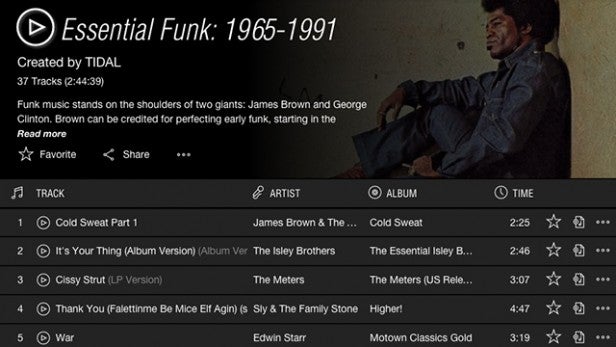
Best music streaming service – music catalogue
Apple Music: Over 40 million tracks
Spotify: Over 40 million tracks
Google Play Music All Access: Over 40 million tracks
Deezer: Over 43 million tracks
Tidal: Over 46 million tracks
Amazon Music Unlimited: Over 40 million
Qobuz: Over 40 million (70,000 in high-res)
For the most part, you’re looking at about 40 million+ songs on any service at any one time, but that number is fluctuating daily as songs are added and removed from the catalogue. Either way, it’s a lot.
What matters more are exclusives. A lot has been made of streaming exclusives over the past 18 months, but thankfully the habit seems to be dying down. After all, who benefits other than the giant corporation behind the service and the artist, who will likely earn a big payout or huge promotion for signing the deal.
The biggest exclusives to date have gone to Apple Music and Tidal, which is owned by Jay-Z and a “coalition” of other artists including Madonna, Daft Punk and Chris Martin of Coldplay.
Apple Music bought a limited-time exclusive for Drake’s 2016 album Views to bolster the service, while Beyonce’s Lemonade is still streaming exclusively on Tidal more than a year after its release.
Spotify’s popularity as a music service has seen it negatively targeted by artists aligned with other services too, such as Taylor Swift and Jay-Z, who have both removed some of their music from the service (though Taylor has recently re-instated it).
Rather than opting for this sort of willy-waving (although it was home to a lot of exclusives early on), Spotify tends to favour Spotify Sessions, which are (usually acoustic) live recordings, in order to get exclusive content on its service. Deezer is also doing similar with its Deezer Sessions.
Google Play Music’s Mark Bennett has also spoken out against exclusive streamed albums. While its done it in the past (it streamed Take That’s album exclusively in 2015), Bennett now says it would rather win over users with functionality over exclusives.
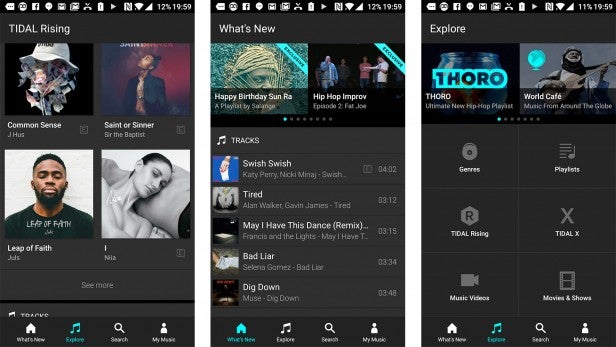
Best music streaming service – popularity
Apple Music: 38 million (March 2018)
Spotify: Over 70 million (Jan 2018)
Google Play Music All Access: Not known
Deezer: 9 million (Sept 2017)
Tidal: 3 million (controversial)
Amazon Music Unlimited: 11 million (June 2017, approximated)
Qobuz: Not known
Hopefully you have some idea about which streaming service might be right for you. But which is the most successful?
Apple has expanded its audience hugely since its launch, but Spotify is still the clear market leader with 70 million paid subscribers to Apple’s 38 million.
Other services are much less popular. Google hasn’t announced any figures (not a great sign), and nor has Qobuz, while Tidal was reportedly at a fairly dismal 1.2 million paid subs last year (rather than the 3 million quoted by Jay-Z. This is even after scoring the exclusive on Beyonce’s Lemonade.
Deezer’s figures are estimated at 9 million, which sounds much healthier. However, you also need to consider that it has been around since 2007, s0 almost as long as Spotify.
For now this is Spotify’s business, with only Apple on track to compete.
Spotify vs Apple Music vs the rest – which is the best music streaming service right now?
For the audio snobs out there, the best services are Deezer, Tidal and Qobuz. They let you stream lossless FLAC files if you sign up for a higher-price subscription, and both Tidal and Qobuz goes a step further by offering a growing library of even higher-quality 24-bit albums (though you’ll have to pay a fair whack for the pleasure on Qobuz).
The best free options are Spotify and Deezer. Google Play Music is also great if you’re happy streaming music you already own, while the other two are spot on for casual music listening when you just need to fill some time, say, at the gym or on the way to work.
Amazon’s Prime Music option is also good for this, though as it’s bundled in with Amazon’s £79/year Prime membership, it isn’t technically ‘free’.
For all-round music discovery, interface richness and effort-free playlist curation, we’re inclined to stick with Spotify for the time being. However, we also know plenty of people who have moved to Apple Music and don’t regret it, and Deezer is catch up fast, matching Spotify in features and pricing.
If you’re not convinced by any of these service’s stand-out features, the best bet is to give a few a go. While Apple Music doesn’t have a free service, there is a generous 3-month trial that is free in the US and UK, and most others will offer you a 30-day taster. Enjoy!


